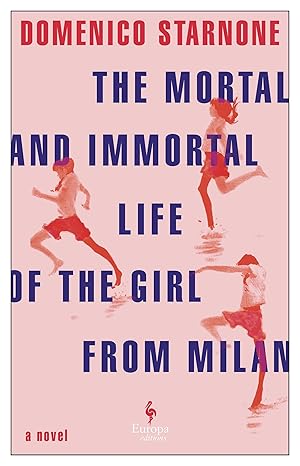3.5 Stars
This is a quiet, reflective novel; although it’s a genre I usually enjoy, I sometimes found myself losing interest while reading this book, a translation from Italian.
An elderly man looks back at his youth, beginning with a pivotal event when he is 8 years old in the early 1950s in Naples. He sees a black-haired girl dancing on a balcony across from his and falls in love. An imaginative child, he daydreams about being her hero, fighting duels and even rescuing her from death. Only later does he realize that what he remembers may not truly reflect the reality of what happened to his first love.
I appreciated the novel’s portrayal of the thoughts and emotions of a young boy. It feels so authentic. He longs for a dramatic life and death so romanticizes everything. He dreams of “perishing heroically” but “if I got a scratch or felt pain or saw blood, then life was intolerable, and even worse if accompanied by a few humiliating sniffles and tears.” His infatuation for the girl is not an ordinary infatuation but a life-or-death infatuation. Even in early adulthood, his aspirations are not just about succeeding in life: he aspires to acquire immortality through his writing.
What the book emphasizes is the difference between his romanticized love for the girl and the very real, unconditional love of his grandmother. The girl is beautiful and speaks proper Italian whereas his grandmother is ugly and speaks a rough Neapolitan dialect. He focuses on loving the distant and idealized love object instead of the ever-present, tender and attentive grandmother. He sometimes appreciates what his grandmother does for him but, “To tell the truth, underneath it all, I don’t think I even loved her that much.”
A university exam on glottology, the history of language, forces the protagonist to pay attention to his grandmother’s dialect. He realizes that language constantly changes and can never truly capture what one is trying to express: “marks and signs are constitutionally inadequate, fluctuating merely between what you try to say and pure dismay.” He decides to write “without ever caring about approval, or truth, or lies, or raising issues or sowing the seeds of hope, or how long something might endure, or immortality or any of the rest of it.”
Of course it is not just language that changes. Nothing lasts forever. Eventually, the narrator confronts his childish delusions and prejudices. His grandmother changed from a beautiful young woman to an old, stooped woman, but we are all a “mass of living and decaying matter.” A favourite quotation from the book is the comment, “’We spend half of our life studying the mortal remains of others and the other half creating mortal remains of our own.’”
At 144 pages, this is a short novel but it gets bogged down occasionally with long paragraphs about linguistics. While describing his first-year university studies, the narrator goes on and on about topics such as toponyms, changes in spellings of words, phonetic writing, and “how phonemes are classified.” This book was written in Italian and its intended audience is Italians who have some familiarity with different regional dialects and how they differ from standard Italian. Not being one of those people, my interest waned. What am I to make of this: cchitaratoperméss, eh, mestaifacènnascípazz, taggiocercatadapertútt, macómm, tujescecàsasènzadicereniént, moverímmoquannetòrnanomammepapà, moverímm?
This book contrasts reality and fantasy, familial anomd rantic love, and old age and youth. Much of it resonates. However, the information dumps become tedious.
Note: I received an eARC from the publisher via NetGalley.

No comments:
Post a Comment